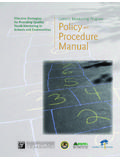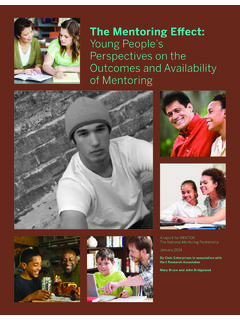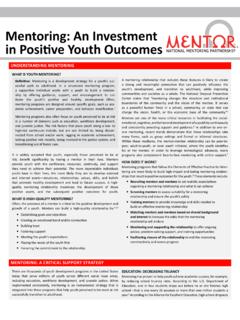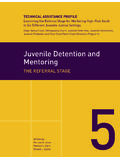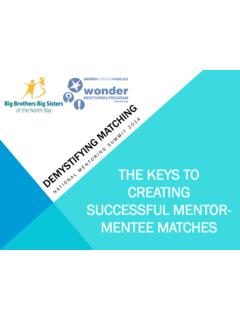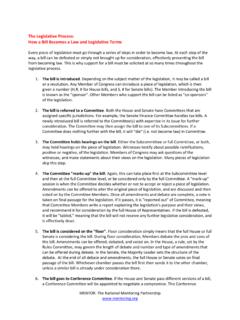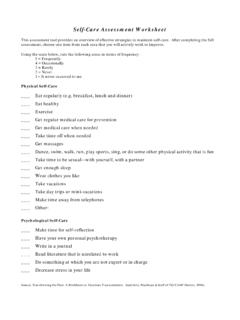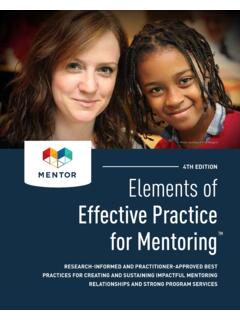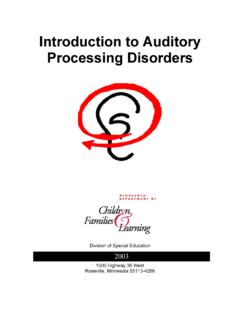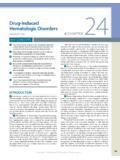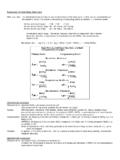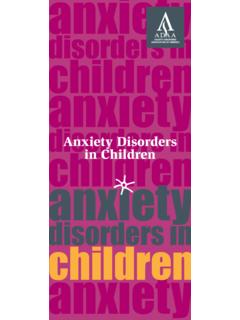Transcription of Effective Mentoring for Youth with Autism …
1 Effective Mentoring for Youth with Autism spectrum disorders Kristin Humphrey Mentoring Director Partners for Youth with Disabilities 617-556-4075, ext. 21. Agenda PEER Pilot Program Background on Autism Communication Behavior Management Building Social Skills Helping Youth Understand Autism Inclusion Reflection Questions/Evaluations PEER Program Studies in the general population have shown that Mentoring is an Effective way to promote positive Youth development, including improved social outcomes. Mentoring for Youth with Autism spectrum disorders has not been described. We developed a short-term program in which college students served as mentors for teenagers with Asperger Syndrome and High Functioning Autism , and assessed its effect on their self-esteem, social anxiety and quality of life. Structure Nine Youth , ages 14-18, were each paired with a college-aged mentor to complete a 6-month program called Partners Exploring Education and Recreation (PEER).
2 Mentoring pairs met once a week for two hours at a local Boys &. Girls Club (BGC). They chose activities from six core areas: Art, Education, Leadership, Life Skills, Recreation and Technology. Evaluation Program feasibility was evaluated by satisfaction reports from Youth , parents, mentors, and BGC staff. Program efficacy was assessed by comparing baseline and outcome measures of quality of life, self-esteem, and social anxiety. Mean Scores Before and After Intervention Before After 80. 70. 60. 50. 40. 30. 20. 10. 0. Health & Feelings Getting School Health & Feelings Getting School Activities Along Activities Along Teen Peds-QL Parent Peds-QL. Results Self Esteem Social Worries 12. 23. 10. 22 8. 21 6. 20 4. 2. 19. 0. Teen Parent Before After Results Parents All parents described the Mentoring relationship as very positive.
3 75% of them reported their child's progress on set goals was somewhat or very successful. Parents on average reported increased quality of life in all domains, and somewhat fewer signs of social anxiety. Youth 89% of teens reported that it was very true that they felt happy around their mentor, while 11% reported that this was sort of true. Their reported self-esteem, social anxiety, and quality of life in all domains improved over the 6 months of the program. Mentors All mentors reported that the PEER program was a good experience. BGC Staff of the Boys and Girls Club rated the program as very successful and reported positive changes in mentees' behavior. Staff What is Inclusion? An attitude and approach that seeks to ensure that every person, regardless of ability or background, can meaningfully participate in all aspects of life.
4 The Autism Awareness Ribbon The puzzle pattern of this ribbon reflects the mystery and complexity of Autism . The different colors and shapes represents the diversity of people and families living with this disorder. The brightness of this ribbon signals hope hope through research and increasing awareness in people like you. If you have met one person with Autism , you've met ONE person with Autism .. Demographics o 1 in 88 children have an ASD; some report as high as 1. in 50 (CDC, 2013). o Boys are nearly five times more likely than girls to have an ASD. o ASDs across all ethnicities, socioeconomic statuses Common Strengths of Individuals with ASD. Good visual memory and long term memory Attention to detail Ability to learn rote material easily Tendency to be logical Perfectionism, eagerness to please. Taking things apart and putting them back together.
5 Ability to learn routines, adherence to rules and schedules. Knowledge of specific subjects of interest. For some, exceptional abilities in art, music, technology etc. Triad 1. Language and Communication 2. Social Interaction 3. Repetitive Behaviors or Limited Interests Hidden Curriculum The hidden curriculum is composed of skills we are all expected to know in order to function in society such as: Non-verbal communication Conversational skills 7%. Spoken Word Elements of Tone of Voice Communication 38%. 55%. Non-Verbal Pragmatics Exercise Try saying the word Really five times in a row, but change the meaning each time as follows: I don't believe you I'm shocked I'm delighted I'm telling the truth Literal Interpretation Inclusive Language Use PERSON FIRST language A disability is one characteristic of a person, and language should reflect this People with disabilities not the disabled.
6 Visual Checklist Visual Communication Activity Meltdown Cycle Tips for Adults Remain Calm Use a quiet voice Take deep breaths Avoid power struggles Be flexible Less is more Do not take behavior personally Nurtured Heart Approach Relentlessly look for and reflect back the positive behaviors, qualities and success in the moment they are happening. Consistently set limits on negative behaviors or broken rules with mild and brief consequences. (Example: taking a break). Refuse to get drawn into, and feed negativity with attention and relationship. Helpful Strategies Clear, consistent expectations Structure and routines Preview and review Visual Supports Reinforcers Positive Reinforcement Positive Reinforcement: Following a behavior, a consequence that increases the likelihood that the behavior will happen again in the future.
7 For example: o When you use your store discount card, you pay less for the stuff you need, and you'll be more likely to use the card in the future. o If a co-worker compliments your new hairstyle, you may wear it that way more often. o When you wake up early to get to the gym before work, you feel energized all day and, consequentially, you may do early morning workout more regularly. Positive Reinforcement Positive Reinforcer: the consequence after a behavior (sometimes called reward or incentive ). Individualized Some are intrinsic, some are extrinsic General examples: Feelings of pride/ accomplishment Thank you note Compliment Credit card rewards programs Anything that serves to increase behavior. Role Modeling Proper Social Etiquette o Role-play different scenarios o Practice conversation skills o Observe Making Social Opportunities Enjoyable o Ensure that the social demands aren't too high and don't require too much effort.
8 O Use a lot of humor, games and fun activities. o Incorporate Youth 's special interests. Tips for Encouraging Active Participation o Meeting before Youth enters the activity o Debriefing after activity o Providing covert cues Activity Helping Children Understand their Peers with Autism Examples for explaining differences in: Behaviors Sensory Experiences Communication Tips for Facilitating Friendship o Plan cooperative games and activities that build a team. o Model an open and accepting attitude o Highlight the capacity of all children to give . o Teach children to slow down o Establish your program as a No Teasing Zone . Kevin and Igor's Story Inclusion Checklist What stood out or surprised you? What are you doing well? What would you like to work on or learn more about? Thank you! Questions?
